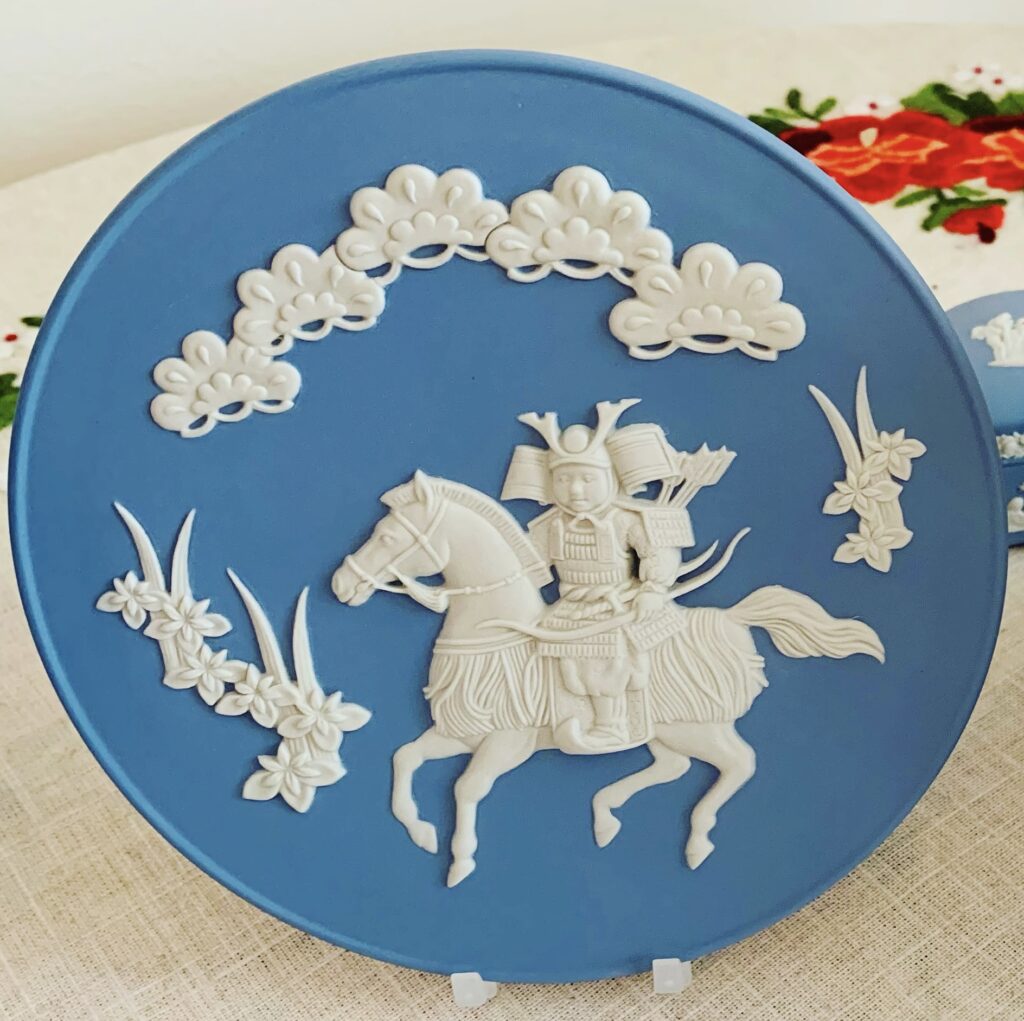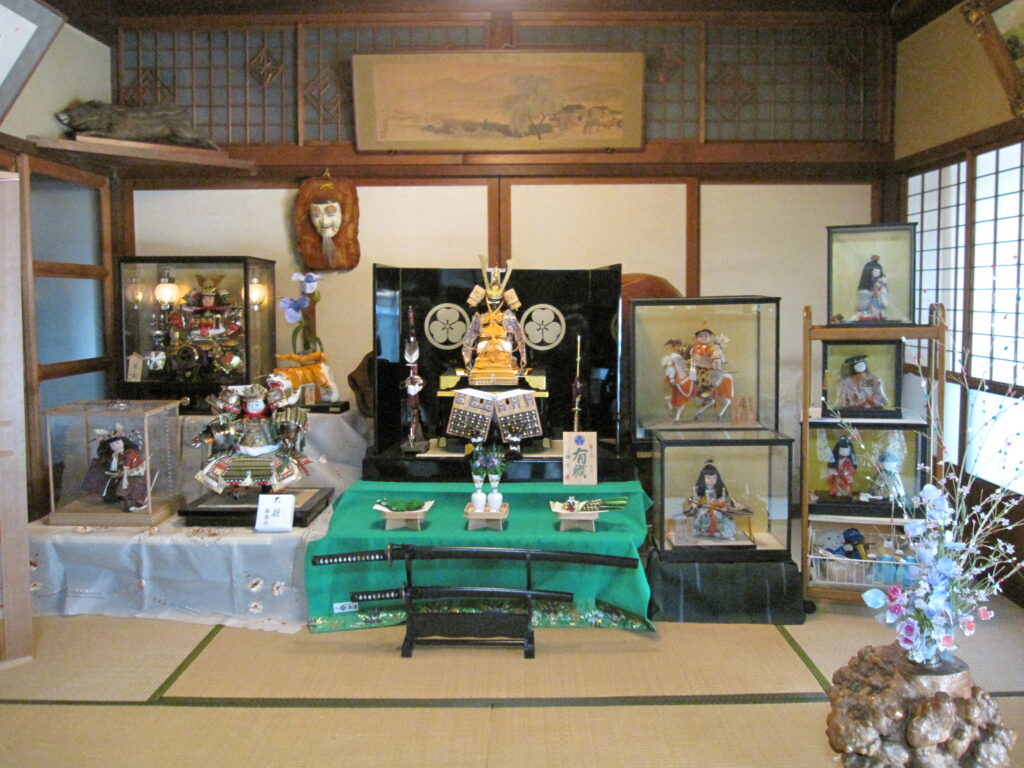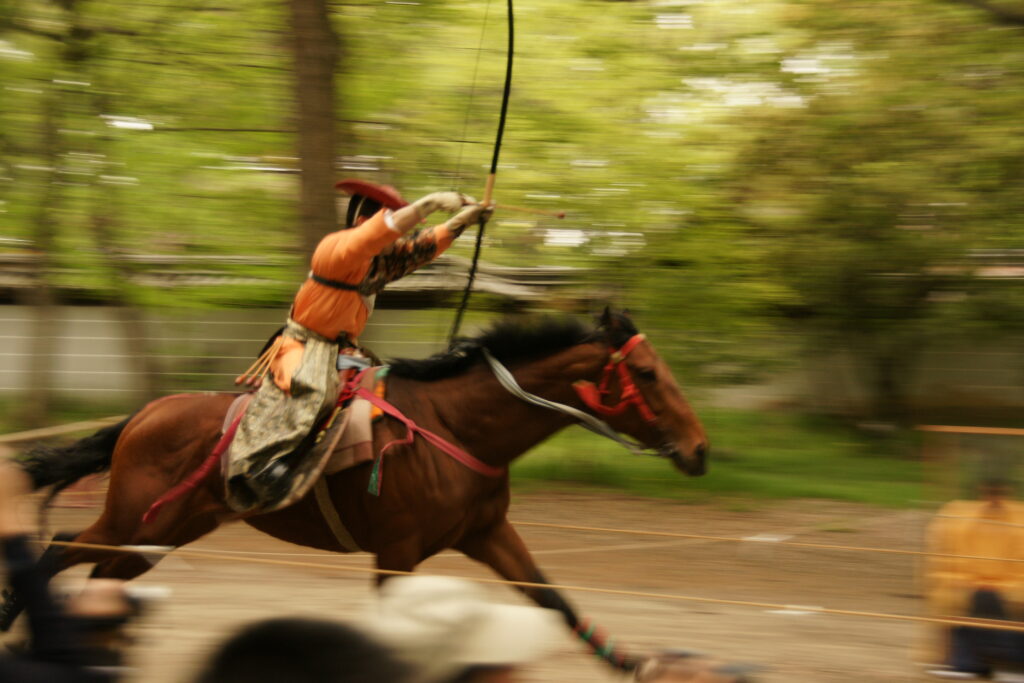Warriors, Carps, and Irises
The counterpart of Hina Matsuri is Kodomo-no-hi (“the Boys’ Festival”), celebrated on May 5th. Although the rituals surrounding this particular ceremony are less intricate than those performed at Hina Matsuri, the decorations are no less lavish and spectacular. This is an occasion to pray for the boys’ health, safety and happiness, the traditional house displays including miniature armors, dolls and carps.
This day is also known as Tango-no-sekku, being one of the five sekku (“seasonal holidays”) officially established during the Tokugawa Shogunate. On this day, besides displaying warrior dolls, families with boys would set up flying-carp streamers, while the boys themselves would participate in kurabe uma (“horse racing”), yabusame (“horseback archery competitions”) or they would fly kites. Customs still practiced today are eating Kashiwa mochi (“rice cakes wrapped in oak leaves”) and taking baths in water steeped with irises.
The carp streamers, called koinobori, are well known and their origin lies in a legend according to which the carp was the only fish brave enough to swim upstream, past the Dragon Gate, at which point the carp itself turned into a dragon, a magical and powerful creature. The carp’s ability to go beyond the unknown and the hardships has become emblematic; that is why the carp streamers displayed on Boys’ Day are a form of prayer for the children of the house to become endowed with the same noble qualities as the legendary carp. This practice is so widely spread in contemporary Japan that it may seem ancient, yet its roots are also in the Edo period, when warrior families started displaying warrior dolls in their houses and carp figurines at the gates, around the Tango-no-sekku day. The musha ningyō (“warrior dolls”) represent historical figures such as Empress Jingū, Minamoto no Yoshitsune or the Emperor Jimmu, as well as legendary characters such as Momotarō the Peach Boy, or Kintarō the Golden Boy (both are heroes from Japanese folklore, boys endowed with supernatural abilities working for the good of humankind).
More than Hina Matsuri, which is closely connected to fertility rituals and new year practices, Kodomo-no-hi appears as a true celebration of childhood, when the multicolored carp streamers flying against the clear blue sky of the month of May suggest infinite freedom and unlimited possibilities for the children who have not yet stepped into the adult world. It is a day when childhood may seem eternal, lush and full of vitality like the beginning of summer, a day when modest fish may turn into royal dragons and the borders between worlds become a little more transparent than usual.



